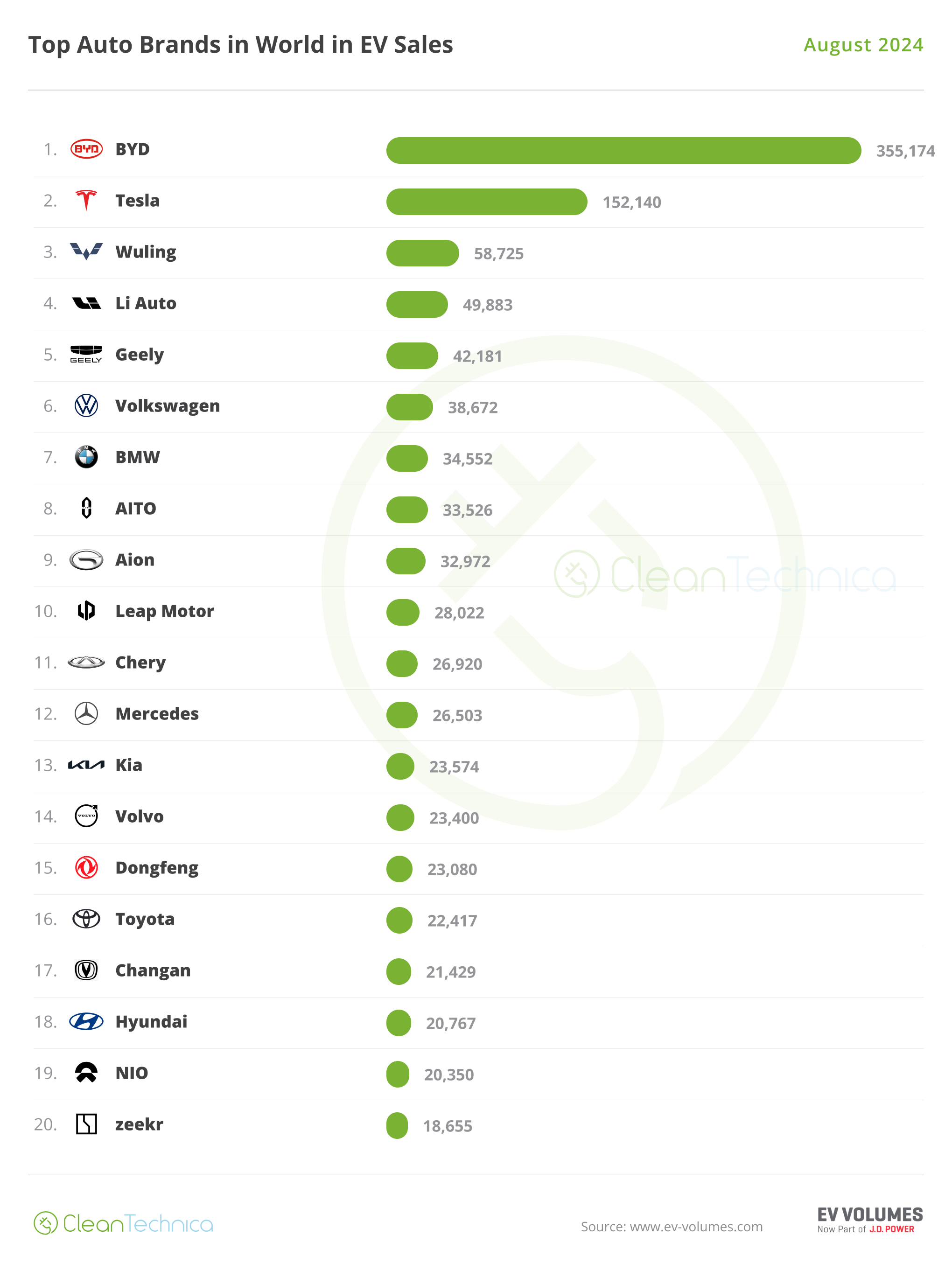Sign up for daily news updates from CleanTechnica on email. Or follow us on Google News!
This article was originally published on July 30, 2024. It was updated on October 1 to reflect new developments in the regulatory proceeding.
California is looked to as a leader in clean energy, and rightly so. It is one of the nation’s leading producers of renewable energy and has pioneered groundbreaking clean energy and transportation policies. But this leadership is threatened by inaccuracies in key electric grid data published by the state’s utilities, which have been ongoing for multiple years.
The California Public Utilities Commission (CPUC) is expected to issue a ruling soon (mid to late October 2024) that could remedy these issues, and pave the way for more efficient and affordable clean energy and electric vehicle adoption in the state. A draft of its Proposed Decision was released on September 13. The draft is positive in that it would require the creation of a working group to remedy some of these issues. However, it fails to include any deadline for these improvements to be incorporated, a significant oversight given that these challenges have already persisted for many years.
In this article, we explore the nature and history of these grid data issues in California, why they matter, and what changes to the Proposed Decision IREC believes the Commission should consider to most effectively solve these problems.
You can also download our factsheet on this issue here.
What’s Wrong with California’s Public Grid Data?
Thanks in part to over a decade of work by public interest advocates, California utilities have been required to develop some of the nation’s best electric grid data transparency tools, called “Integration Capacity Analyses” or ICAs.
An ICA is a model of the electric grid in map form that shows how much electricity generation or demand (“load”) can be added in different areas without costly upgrades.
Unfortunately, since they were first published in 2019, numerous issues with the accuracy, completeness, and recency of ICA data published by California’s investor-owned utilities (PG&E, SCE, and SDG&E) have been identified. These issues limit the ability of clean energy developers and other stakeholders to use the ICA as intended.
Why Do ICAs Matter for Clean Energy?
ICAs offer important benefits for the development and siting of clean energy, including:
- Helping developers choose optimal locations for clean energy and EV charging projects where they are less likely to require expensive grid upgrades. (These upgrades can cost tens or hundreds of thousands of dollars and add months or years to the timeline of a project.)
- Providing utilities with valuable data to inform and prioritize infrastructure investments on the electric grid.
- Improving the efficiency of decisions about whether clean energy projects can be approved to connect to the electric grid. (Since 2022, the CPUC has required the utilities to use ICA data in interconnection review processes for certain DERs, taking the place of more time-consuming reviews.)
- Enabling DERs to operate based on an export schedule that supports grid needs and reduces costs. California made clean energy history in March by becoming the first state to enable clean energy systems to propose an operating schedule when applying to connect to the grid. Under this approach, approved projects can connect without requiring grid upgrades that might otherwise be needed, because they restrict power output at times when the grid is constrained in its ability to accept additional electric generation. This saves time and money and allows more clean energy on the grid.
All of these applications are only possible, however, if the data in the ICA is accurate and kept up to date.
What’s the History of ICA Data Issues in California?
The Commission first required utilities to develop ICAs in 2015 under a pilot program; it required their full publication in 2019. When the first full ICA maps were released in 2019, IREC discovered serious inaccuracies in the data.
For example, PG&E’s map was so inaccurate it indicated that its entire grid was unable to accept any new electricity generation (e.g., solar, etc.) and 30% of its system was not even displayed. SDG&E and SCE’s map also had issues. The maps also had questionable data on capacity for new load (such as that needed for electric vehicle charging). Initially, all three utility maps showed zero capacity for new load across the vast majority of their systems, defying common sense.
Since then, numerous other issues have arisen:
- SCE continues to make significant errors that result in delayed or erroneous data;
- SDG&E has repeatedly violated Commission orders by not displaying required data;
- SCE and PG&E continue to not update their maps at the required frequency: when an ICA is out of date, the accuracy of the data it shows cannot be trusted.
While the Commission has slowly required fixes to some of these problems, five years after the ICAs were first released, many of these issues are still ongoing. ICA development is not simple, and a learning curve is expected. But after nearly a decade of work by the utilities and millions of ratepayer dollars spent, it is reasonable to expect that these potentially game-changing tools should be fully functional.
A Critical Moment for Regulatory Enforcement
On September 13, the Commission released a Proposed Decision that addresses these challenges; it is anticipated to make an official ruling later this month. The Proposed Decision is a step in the right direction because (in addition to other things) it would require the creation of a working group to remedy some of these accuracy issues. Unfortunately, it fails to include any deadline for these improvements to be incorporated, a significant oversight given that these challenges have already persisted for many years.
IREC strongly supports the workshop process, but the Commission must impose meaningful objectives, timelines, and accountability measures. The public record in this proceeding is filled with examples of resistance to these efforts on the part of the state’s investor-owned utilities and failures to tangibly improve the ICA despite multiple efforts similar to the one the Commission is now recommending. If the Commission does not build more concrete objectives into this decision, IREC anticipates that the outcome will be another several years of process without results.
Additionally, there are some changes, specifically requiring utilities to update their ICA maps on a monthly basis, that should be implemented now, instead of pushing them into a working group process. Monthly ICA updates are a long-standing requirement from the Commission, that some of the utilities have declined to comply with. IREC recommends that the Commission give the utilities no more than 120 days from its order to adopt and implement a reliable system for monthly updates to the ICA.
IREC also recommends adding two specific requirements to ensure adequate communication about ICA issues going forward. First, we recommend that the Commission institute a requirement for utilities to promptly notify both it and the public when accuracy issues with the ICAs are identified. This is important to ensure, for example, that clean energy project developers do not invest hundreds of thousands of dollars securing a site and designing a project based on faulty information. Second, in addition to providing timely notice of issues, we recommend that utilities should be required to communicate when these problems are expected to be resolved and any other relevant information.
IREC continues to monitor and engage in this docket. This week, IREC will submit comments on the Proposed Decision to the Commission, reflecting the above recommendations. “Reply comments” responding to the initial round of comments from IREC and other parties will be due October 8. Then the Commission will schedule a meeting to issue its final ruling (likely October 17th or 24th). If you’re not subscribed to our emails, you can sign up here to stay in the loop on future developments.
Get Involved: If this topic is important to you, you can also submit your own public comment or make a comment at any upcoming CPUC meeting prior to the final vote. Additional information on how to do so can be found here on the CPUC website (the proceeding number is R2106017).
—
Delays connecting clean energy to the grid are a leading barrier to clean energy growth. Delays connecting the new loads needed for transportation and building electrification are perhaps even more dire, seriously threatening the state’s ability to meet electric vehicle mandates. Accurate ICAs can accelerate clean energy and EV charger deployment while reducing the need for costly grid upgrades.
IREC urges the Commission to recognize the serious threat that continued non-compliance with ICA requirements presents to California’s clean energy and electrification mandates, and commit to resolving these issues once and for all through firm deadlines for improvements, requirements for clear communication when ICA accuracy issues are found, and by requiring utilities to start updating their ICA maps on a monthly basis.
Guest article from IREC.

Have a tip for CleanTechnica? Want to advertise? Want to suggest a guest for our CleanTech Talk podcast? Contact us here.
Latest CleanTechnica.TV Videos
CleanTechnica uses affiliate links. See our policy here.
CleanTechnica’s Comment Policy





